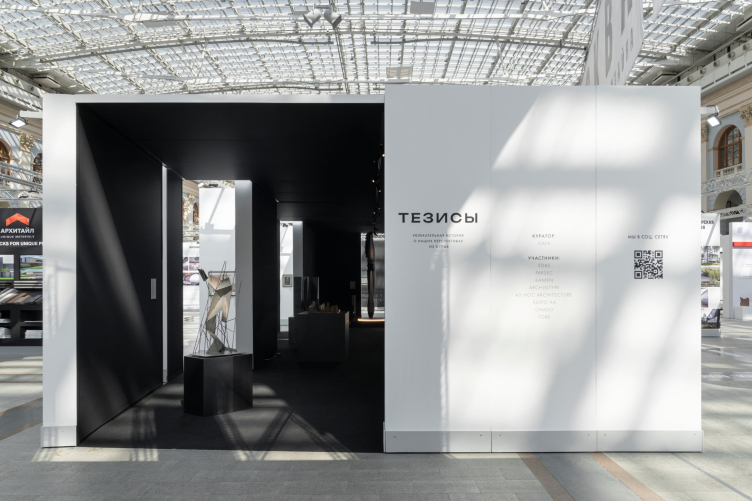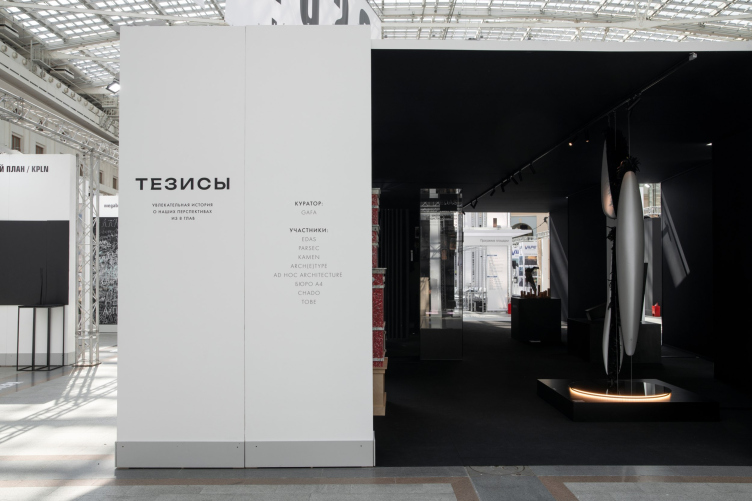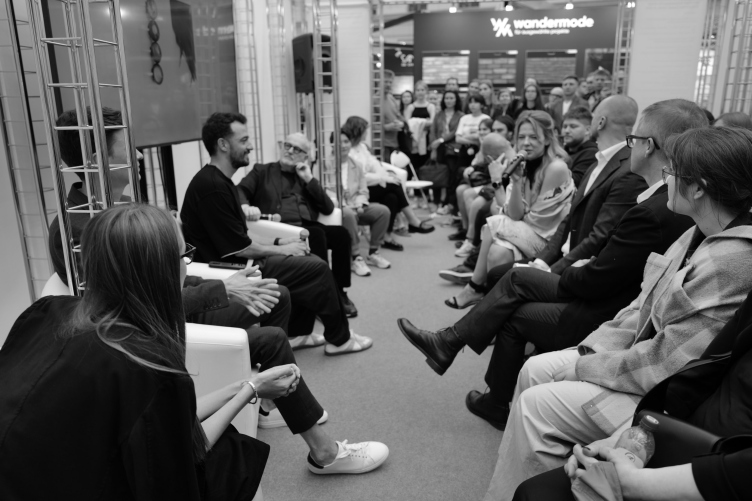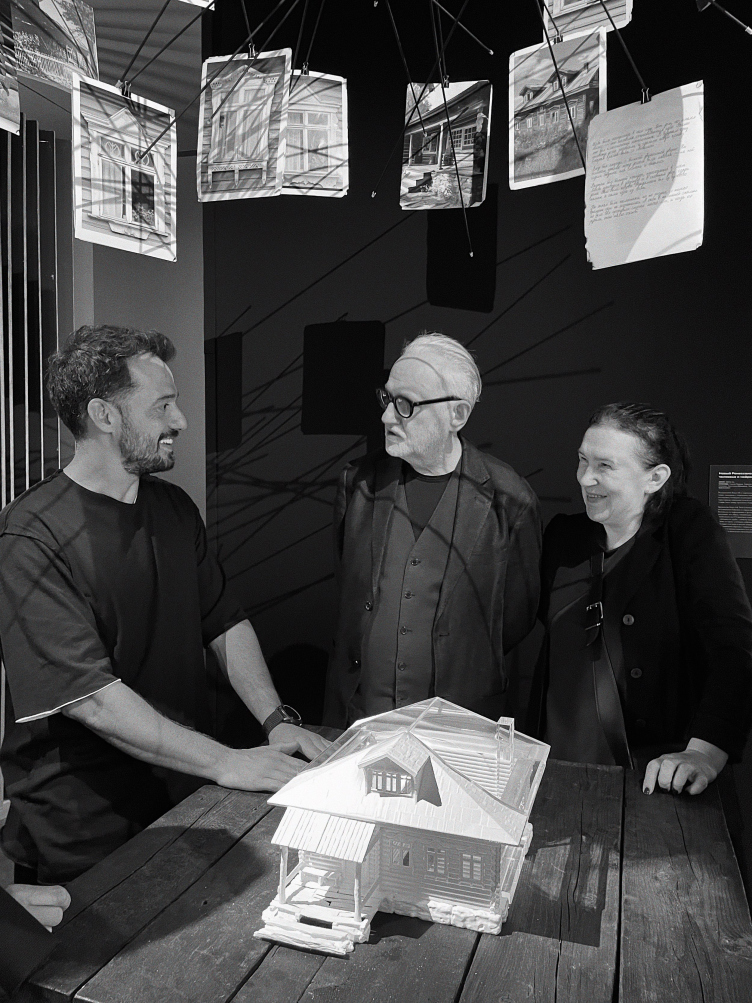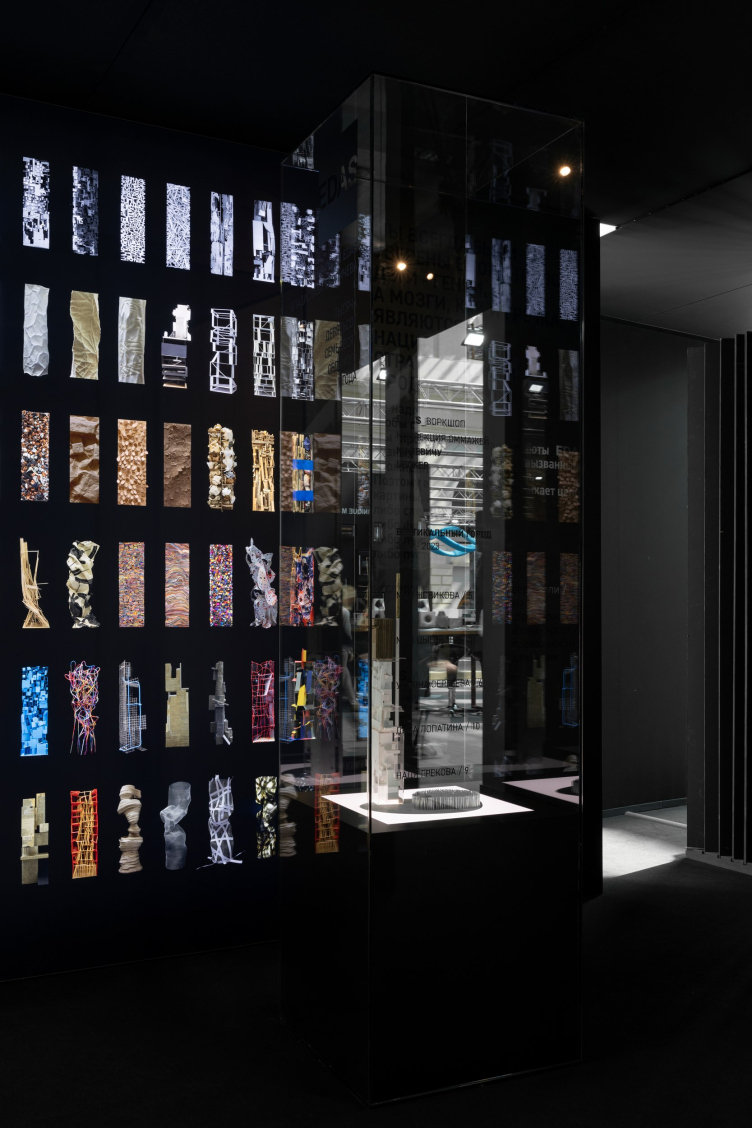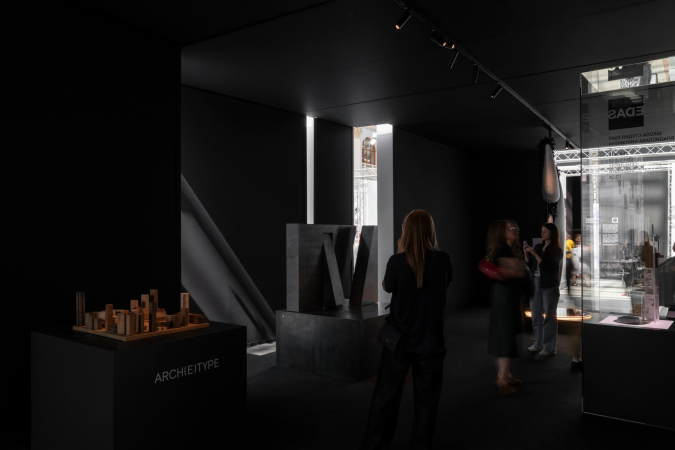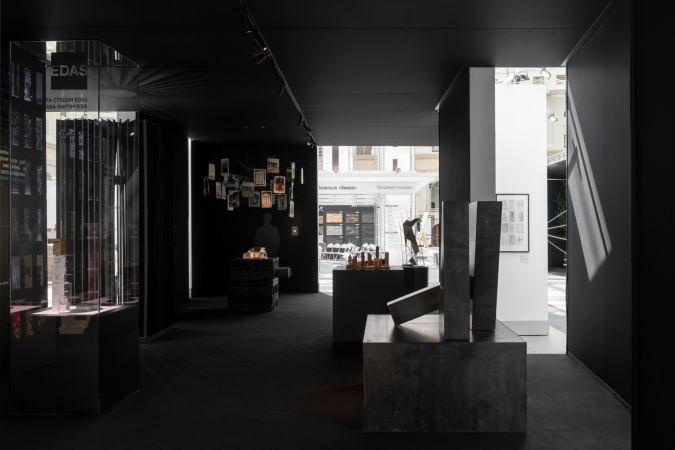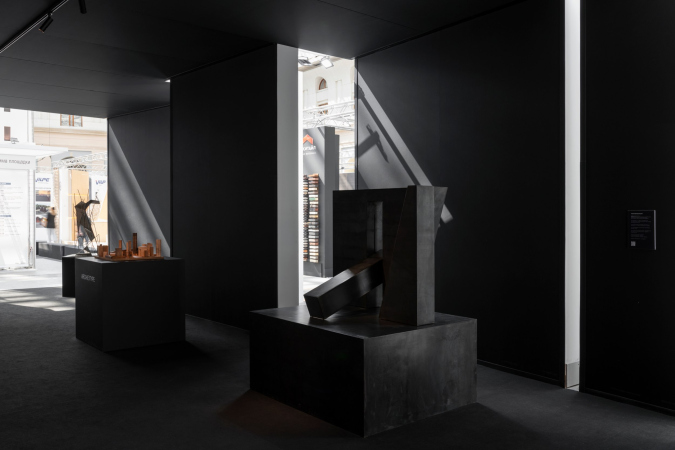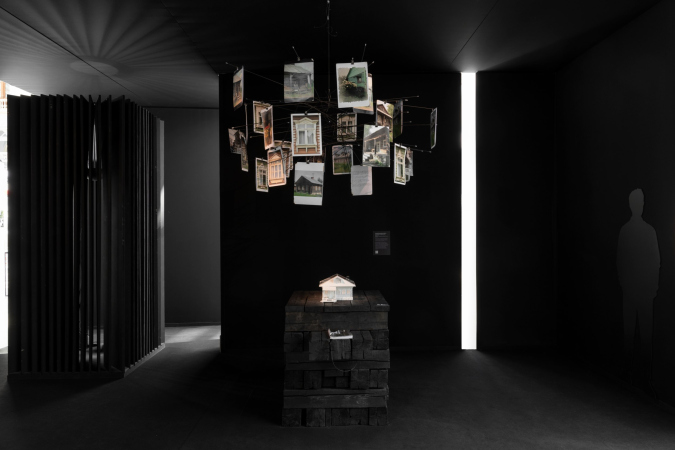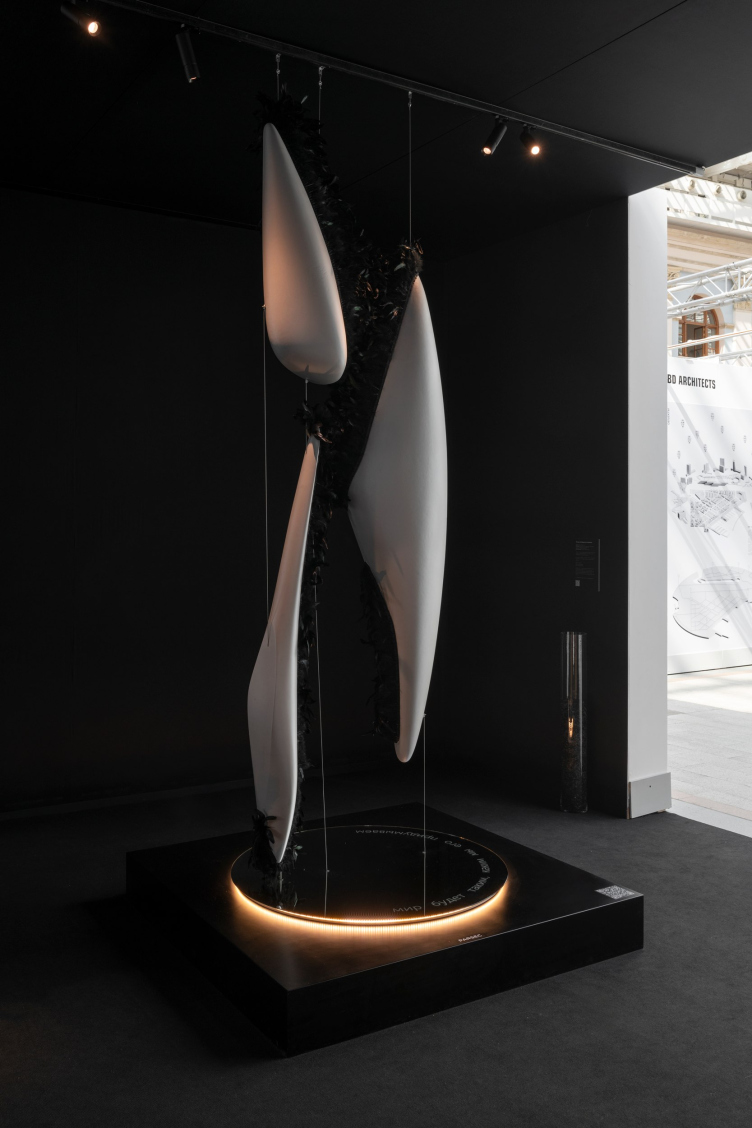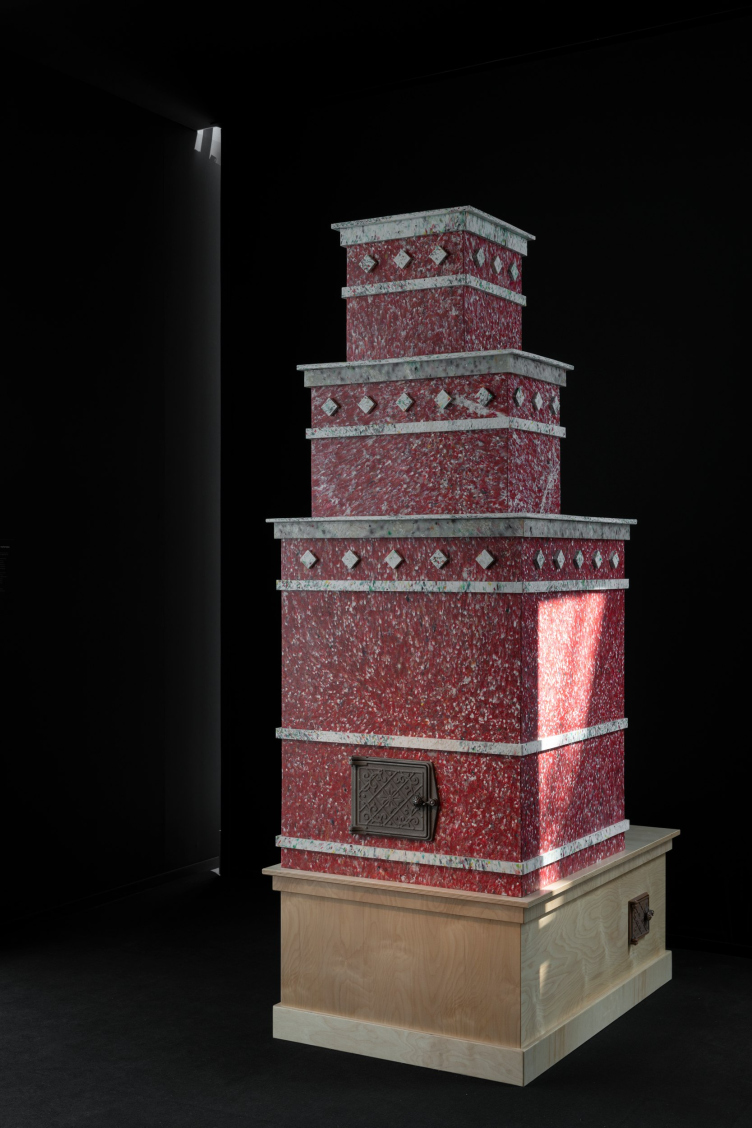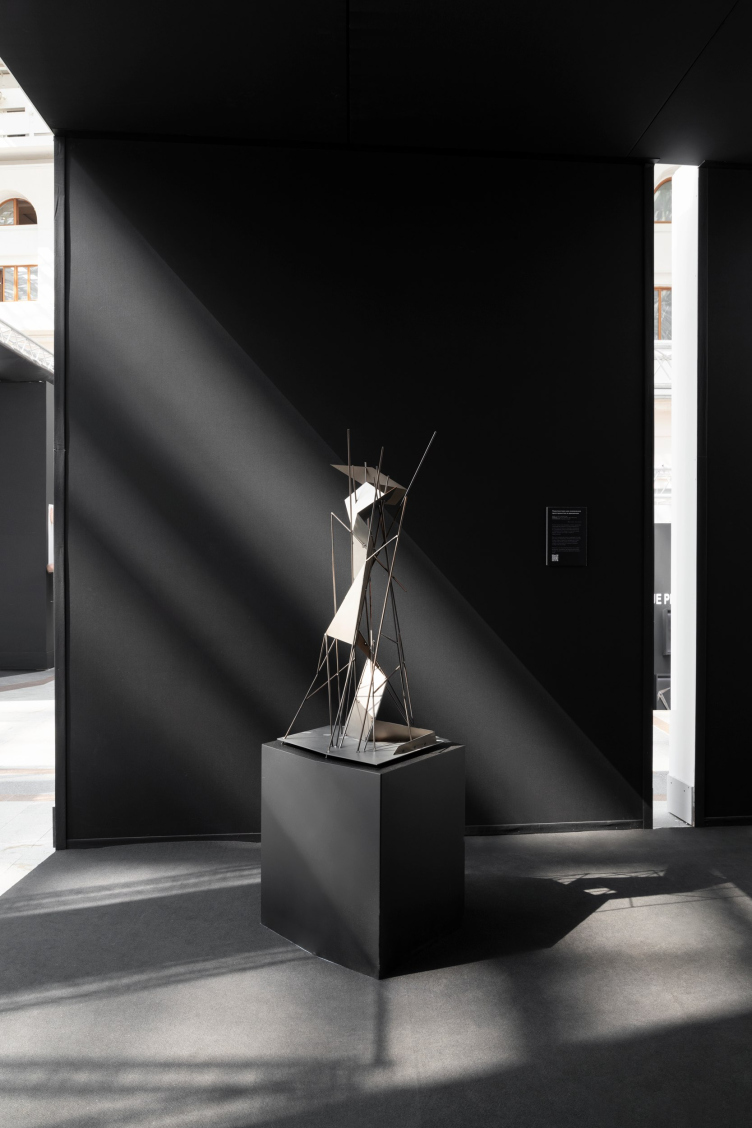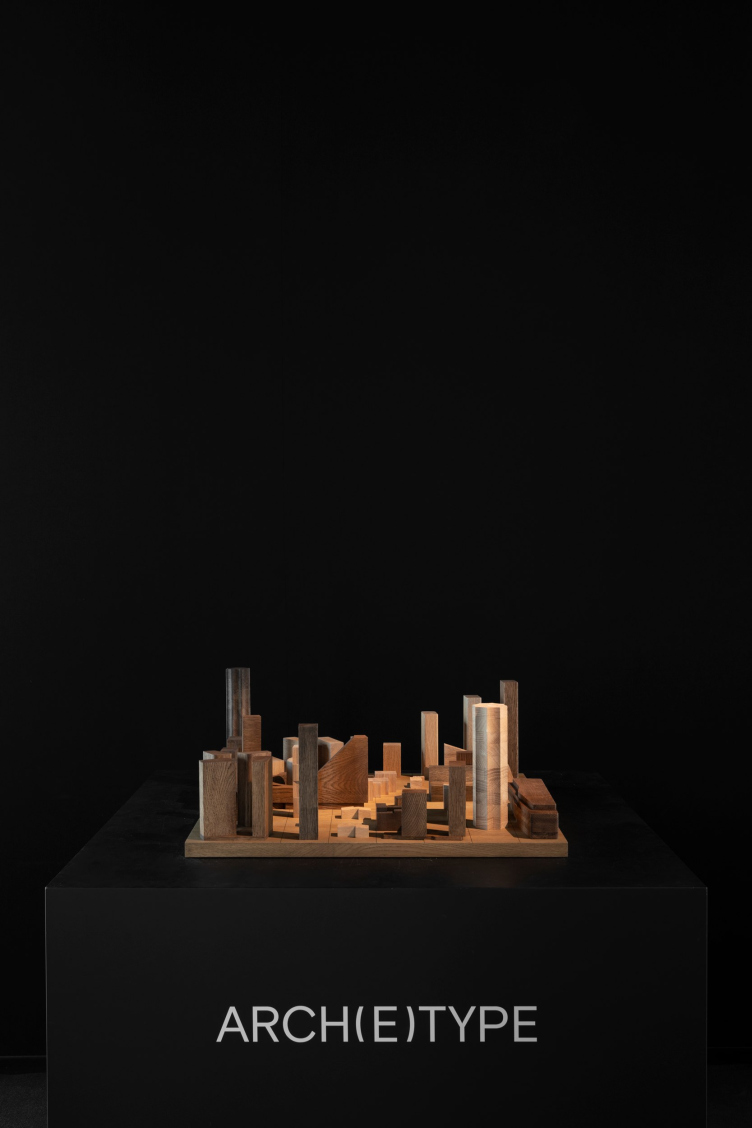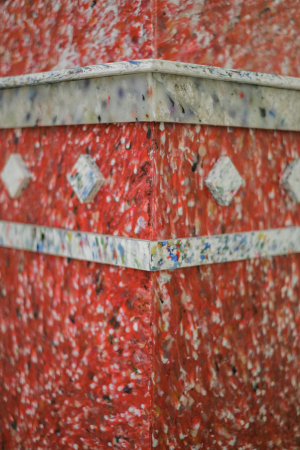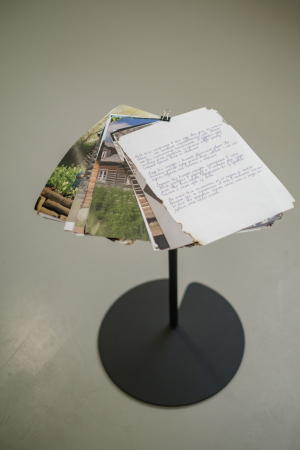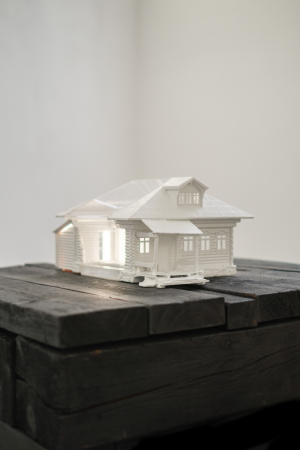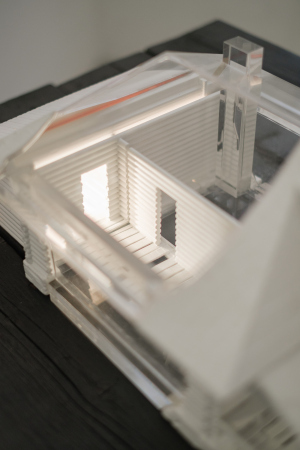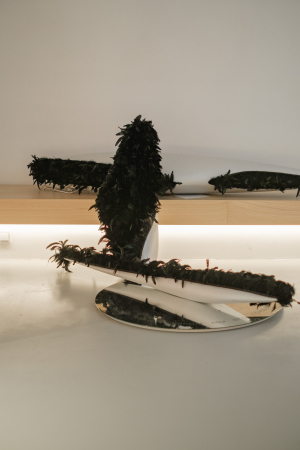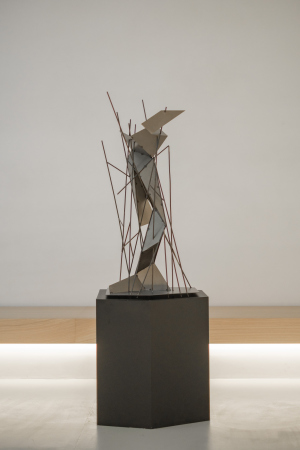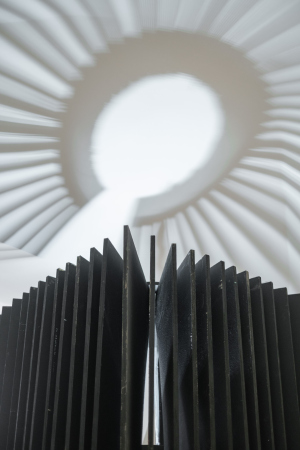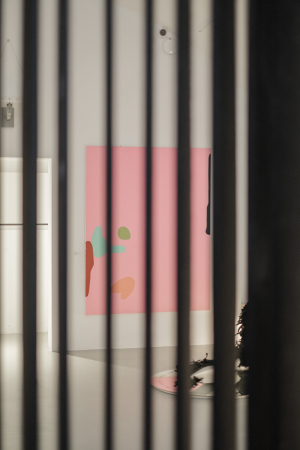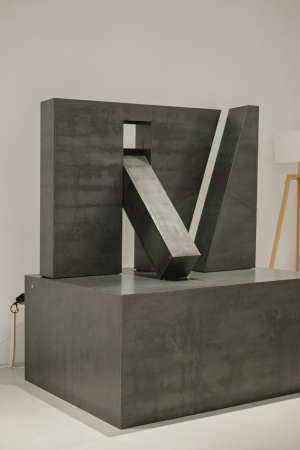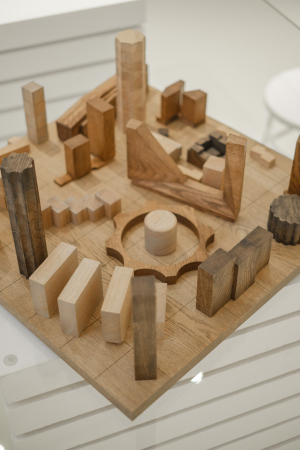Tezisy at Arch Moscow 2023
Copyright: Photograph © Daniel Annenkov / Provided by GAFA
Chapter 1 Enter Grigorios, two liters of Sake, and 300 phone calls.
If someone is interested in the secret of a successful exhibition project, then the GAFA company would probably be my best bet. Last year, this company also curated the project NEXT! with the same competence and drive – it was a great lineup of participants, whose enthusiasm was further boosted by business meetings, panel discussions, involvement of MARCH School, and chats in messaging apps. We wrote in detail about the preparation and results – such an experience, we believe, will be useful to followers.
In 2023, GAFA continued to experiment with the formats of Arch Moscow. The special project has always been called “Antithesis” – but the curators reasoned rightly that it is more important to build bridges and be together than to look for another opposition. This is why they offered each participant the opportunity to choose their own thesis (or “abstract”) and develop it as part of the overall theme of the exhibition, which was “Perspectives”.
This time the participants were experienced and commercially successful architectural companies, on a level with GAFA. Despite their experience, or maybe simply because they were all very busy at the moment, getting them together and bringing the project to the end was quite a tall order. However, GAFA’s enthusiasm is contagious and leaves no chance to stay aside – you enter their field and change yourself.
Below, we offer an imaginary infographic about the preparation of the “Tezisy”:
- It took 300 calls to get the architects to agree to participate, finish the layouts and arrive at the exhibition on time;
- 2 liters of sake was consumed during the discussion of the work of N…
At the presentation of the project, where the spectators were so numerous that they “spilled over” the confines of the pavilion, Grigorios described the participants as “rock stars”. The comparison is apt indeed – let us hope that in the future the profession will include not just pavilions, but arenas of screaming fans as well.
Tezisy at Arch Moscow 2023
Copyright: Photograph © Daniel Annenkov / Provided by GAFA
Chapter 2
In which Master addresses the Child
Not all of the participants of “Tezisy” are young by passport. GAFA managed to do another amazing thing – to attract to the project the legendary Vladislav Kirpichev, who remembers the voices of today’s masters of architecture, when they were still filling their sketchbooks in the halls with avant-garde art.
Tezisy at Arch Moscow 2023
Copyright: Photograph © Provided by GAFA
As a matter of fact, the project prepared by EDAS school won the first prize of “Tezisy” as the best architectural statement. “Brains, just like buckwheat, are the national strategic product” – read the accompanying inscription on the wall of the pavilion. You cannot but agree with that, because it’s so painful to see the wonderful brains leaking out of the country.
As for the source of the strategic product, the inscription also says: “We have always believed that every child is a genius…” The EDAS school has always fostered individuality and independent thinking in its students, and it obtained results that surprised everyone. On the silkscreen, there is a collection of homages, sparkling “ingots” with layouts made by children as young as 6 years old. There is admiration and hope in the eyes of the beholder.
Against the background of the “bullions”, the installation itself looks a bit lost, but the statement continues: a vertical city that demonstrates how differently children can play with cubes.
Tezisy at Arch Moscow 2023
Copyright: Photograph © Provided by GAFA
The curators share that at one of the preparatory meetings the teacher “provoked” a discussion – it was easy to get confused by his questions, but it was also interesting to look for an answer. The presence of Vladislav Kirpichev, it seems, definitely influenced the other participants.
Architecture is not about buildings. Architecture is about space plus the way we move in it. Descartes first described space through the extent of the bodies that fill it. After him, the whole of European metaphysics became like an attic, cluttered with objects and associated forever with fullness and excess. Kant threw objects and bodies out of the attic, clearing the room. Now space along with time is connected to consciousness, not to bodies and objects...
Tezisy at Arch Moscow 2023
Copyright: Photograph © Daniel Annenkov / Provided by GAFA
Chapter 3
In which the kids create perspectives
You get into the dark pavilion of “Tezisy” from a lit space – the sounds get muffled, and the colors get brighter in the highlighted objects. They look as if they were hovering in an empty space, or as if we were wearing AR glasses.
“The world will be as we invent it” reads the message of the PARSEC installation in the darkness. The architects propose that everyone interpret it according to their taste: the sculpture of streamlined volumes with the trim of soft feathers at the rational level does not seem to relate to any ready-made images, but makes you dive into the unconscious and seek answers there, in the space of dreams or the cosmos. PARSEC finds “points of reference beyond the earthly”, and in the work they combine things that they value the most – lightness, play, sensuality, mathematics, philosophy and poetry.
Tezisy at Arch Moscow 2023. PARSEC ARCHITECTS, “Fixes Points Beyond the Terrestrial”
Copyright: Photograph © Daniel Annenkov / Provided by GAFA
CHADO’s work echoes this plurality of possibilities: the perspectives are infinite, but which of them will a man be able to discover, what will catch his eye? “Black Monolith is inspired in part by Stanley Kubrick’s Space Odyssey, in part by the Sumerian disc or the Maya calendar, and symbolizes the clot of perspectives that is opened up by the knowledge of previous generations, the will to accomplish something, and some kind of catalyst. This also brings to mind the final episodes of another film, The Fifth Element – let love be the catalyst.
Tezisy at Arch Moscow 2023. "The Black Monolith , the precursor to discovering a perspective."
Copyright: Photograph © Daniel Annenkov / Provided by GAFA
Across from it, there is something earthy, warm, and stable: a stove made by TOBE architects from recycled plastic. The marble-like material brings to mind the ancient halls of the Hermitage or maybe the St. Petersburg subway. As you get closer, you cannot resist the urge to touch it. New perspectives are opened by a synthesis of identity, new technologies, and environmental responsibility.
Tezisy at Arch Moscow 2023.TOBE Architects, “Substitution in the hearth of culture”
Copyright: Photograph © Daniel Annenkov / Provided by GAFA
KAMEN (“Stone”), which was the only one to present a kinetic object, sees the meaning of things in transformation. It becomes the basis for the search for form, function, and feeling. Everything flows and changes with time and space. It becomes a kind of haiku:
The horizontal flows into vertical. The public function flows into a residential one. The closed space becomes open. Hybrid and multifunctional are our future.
Tezisy at Arch Moscow 2023. KAMEN Architects, Transformation
Copyright: Photograph © Daniel Annenkov / Provided by GAFA
AD HOC ARCHITECTURE takes a slightly broader view, glorifying movement per se. Movement generates life, not always predictable or even happy, but there is only certainty in death, the essence of which is the absence of all movement. Mors certa, vita incerta. “If there is no movement and nothing happens, everything becomes cold, dull and meaningless, and the impulses and triggers of various processes create dynamic, non-linear spaces whose perspectives are learned through movement”.
Tezisy at Arch Moscow 2023. AD HOC ARCHITECTURE “Perspective of Movement”
Copyright: Photograph © Daniel Annenkov / Provided by GAFA
A4 associates the “new renaissance” with technology – the idea hangs in the air rather intrusively, but here they managed to breathe a piece of human warmth into the neural networks. The architects acted as intermediaries between the grandmother of one of the participants in the project and MidJourney: the memories of one “downloaded” into the other in order to restore the look of the burnt-out house, the family nest, photos of which are almost gone. Discovering more and more new details, the architects gradually came to a certain form, but they did not seek to restore everything – only the most striking things that stand out in the memory. The layout was printed on a 3d printer, making the gaps transparent; the pedestal was built from the logs of the old house – this way, the new sprouts from the old.
There is, of course, always a possibility of an error due to the nature of human memory, and this method of reconstruction cannot be called scientific. However, it definitely captures your imagination. You start fantasizing how in the future it will be possible to load all existing documentation about the lost object into a neural network, add a piece of preserved authentic matter to this “melting pot”, and you will obtain a hologram of the building and working documents for actual reconstruction.
Tezisy at Arch Moscow 2023. A4, "The New Renaissance: the synthesis of humans and neural networks"
Copyright: Photograph © Daniel Annenkov / Provided by GAFA
The ARCH(E)TYPE team, which makes architecture, furniture, and jewelry, predictably pays maximum attention to interdisciplinary flexibility. Their table displays a postmodernist game of scaling: a slice of a column becomes a decoration and then, like Lewis Carroll, blows up to become a public building. It is only the concept that matters: a good one is bound to work on a scale from storefront to megalopolis.
Tezisy at Arch Moscow 2023. ARCH(E)TYPE , “Perspective in Interdisciplinary Flexibility and Subordination to a Common Concept”
Copyright: Photograph © Daniel Annenkov / Provided by GAFA
Afterword
The “Tezisy” project was a success and aroused a lot of interest, which evidenced by the sheer fact that the pavilion never stood empty. After Arch Moscow, Daria Belyakova, the founder of ARCH(E)TYPE, showed “Tezisy” in her A-House space, a club for architects, designers, and “other visionaries from related fields”. The project could have gone on tour to St. Petersburg’s “Sevkabel”, but, as the participants rightly pointed out, “you still have to go and do actual work sometimes”.
Therefore, for all those who didn’t make it to Arch Moscow, the organizers have prepared a film tour; it is posted on a brand new, but promising GAFA’s YouTube channel.


